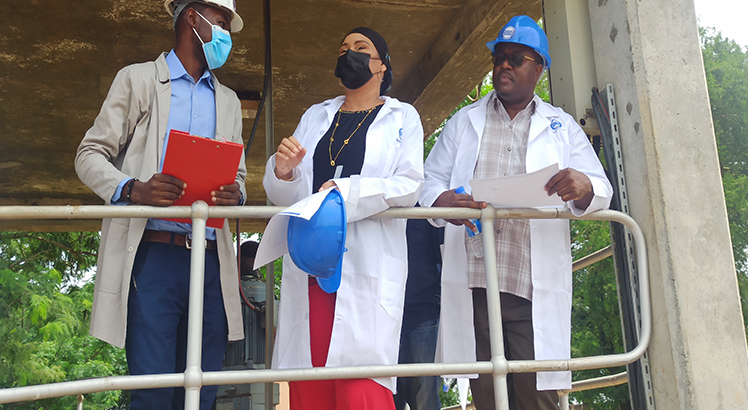The first time I trekked to the Providence Industrial Mission (PIM) in Chiradzulu was some time at the turn of the millennium. To get there, the greater part of the road was dusty and the only means of transport was matola (hitch-hikes) in a pick-up.
Of particular interest, at the time, was to understand a bit of John Chilembwe, one of the first Africans to fight for independence from colonial masters. After listening to the Chilembwe play on MBC every March 3, a day we were all under house arrest in respect for martyrs like Chilembwe in those days.
On that pick-up Matola, the interesting thing was that most of the passengers were azungu (whites). More azungu were trekking to PIM to learn about the man who stole guns at an armoury, whose followers beheaded William Bruce Livingstone and the head was displayed at the church he founded at PIM. Chilembwe, the man who in 1915, led an uprising against colonialism, was killed on February 3 1915, barely after the revolution began.
Tourists walk towards the cathedral
So, on March 3 2022, the trip back to PIM brought deeper insights of this rarely talked of historic site as a tourism attraction little talked of. On this day, the Hikers’ Alliance brought together individuals, companies and organisations in a tree-planting exercise in what their leader Austin Mndolo said was a way of honouring Chilembwe ‘who loved nature’.
It was no wonder to see the adventurous hikers tour historically important sites. PIM represents a museum or, if you may, a museum with a number of interesting sites.
On January 15, when Malawi remembered the man whose face is on the K500 and K2 000 notes, President Lazarus Chakwera had a photo shoot at the famous Sanjika Rock. In an interview, PIM president Wilson Mitambo says Chilembwe used to go to the rock to study, meditate, cogitate and pray.
“It is from the rock that Sanjika Palace derives its name. PIM is a living museum. It is a great part of Malawi’s history,” says Mitambo.
The rock is enigmatic. How a small rock acts as balance for a very big rock for all these years is, simply, enigmatic! How the rock has withstood all these years without weathering into oblivion is perplexing! How nature chose to arrange the rocks in such a form is unfathomable!
A walk from the Sanjika Rock you find the Kasiuka Stream. Here, you find what the locals will tell you is the River Jordan. It is here that Chilembwe baptised adherents when he set up the church in 1900. According to Mitambo, who is the sixth leader of the church since Chilembwe, Christians are still baptised at the river.
A local, Margaret Magombo from Kumitete Village, affirms it is at ‘Jordan’ where Chilembwe baptised Christians and the tradition continues.
“I was born in 1953, long after the uprising. But I am very happy that the cause that Chilembwe started in 1914 bore fruit when Kamuzu Banda sent [Sir Roy] Welensky home,” she says.
The PIM history gets deeper as you walk towards the New Jerusalem Temple. This was the church that Dr Daniel Malikebu built between 1928 and 1933. The cathedral, most possibly modeled after the St Michael and All Angels church in Blantyre, stands strong and is as good as new. The acoustics in the cathedral get you an eerie feeling.
Malikebu, who succeeded Chilembwe, had permission from the then colonial government to rebuild the church after PIM was unbanned. The spot on which the first church was built before it was dynamited during the Uprising is another-to-visit spot as it is demarcated.
An interesting feature outside the church is a thundu (soulplum) tree. This is the spot where Malikebu and his followers used to pray before the church was rebuilt.
Within the mission expanse you will also find the cenotaph where names of Africans who were slain during the Uprising are inscribed. It is here that wreaths in honour of the departed martyrs are laid by political and religious leaders, the military, diplomats and others.
Within the mission, you also find the Ida Chilembwe Community College in honour of the martyr’s wife. It is a show of respect for the woman who in those days used to offer home economics and tailoring lessons to locals.
Mercy Kaunda, a member of Team Adventure, believes PIM is a tourist attraction for local and international visitors. “This is the homestead of our national hero. Features like the Sanjika Rock, the buildings and monuments are equally attractive,” says Kaunda.
James Pothiwa is a Mulanje-based adventurer who has toured several sites, including hikes to Sapitwa. This year, with sponsorship available, he is eyeing to join a Malawian excursion to Kilimanjaro Mountain in Tanzania. He feels PIM provides a unique attraction.
“We can go to Sapitwa and back on the same day, but PIM is something else as it presents. I only wish more locals were told the deeper meaning to the monuments,” he says.
Malawi Tourism Council director Innocent Kaliati says heritage tourism sites like PIM must be preserved. Kaliati, who has several social media clips on some of the marks at PIM believes tourism is not just about physical features.
“Other countries in the region have mountains, rivers and lakes. Yet, the Chilembwe story offers a unique selling point for heritage tourism which is growing globally. The Chilembwe story is known in Africa and beyond as one of the first Africans in the struggle for independence,” said Kaliati.
According to him, PIM is located where tourists can also visit the Robert Maloti Slave Hut in Nguludi, a museum remembering the first indigenous Nyasa to be involved in slave trade. He also said the house where Alexander Livingstone Bruce was beheaded.
“I wish the government could do more to preserve the Chilembwe history. It is sad that Chilembwe is believed to have been buried in one of the tea estates, yet government has not gone deeper into establishing this,” said Kaliati.
According to Mitambo, currently the government through the department of museums helps in maintaining some of the spots. He, however, said it is mostly students who visit PIM for education purposes.
“Currently, we want to set up an information centre where the Chilembwe and PIM story will be documented. We can’t talk about independence or human rights history in this country without this place coming into the picture,” says Mitambo.
The post PIM as a tourist haven appeared first on The Nation Online.
 Moni Malawi
Moni Malawi 

